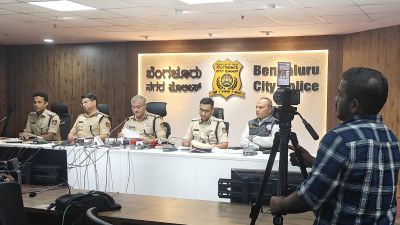Stay updated with the latest - Click here to follow us on Instagram
The Censor Nama
More than 60 years after the Cinematograph Act was introduced defining what can be shown on the screen
A few Weeks before amendments to the Cinematograph Act,1952,is tabled in Parliament,a seminar in Mumbai looks into the burning issues
More than 60 years after the Cinematograph Act was introduced defining what can be shown on the screen,both big and small the first set of amendments are set to be tabled in Parliament in the Monsoon session. Next week,representatives from the film industry and members of the Central Board of Film Certification (CBFC) will meet for a day-long seminar at JW Marriot hotel in Mumbai to discuss concerns related to censorship and certification in Indian cinema.
The panelists will include filmmaker Shyam Benegal,director Rakeysh Om Prakash Mehra and ad guru Prahlad Kakkar among others. It will also be the first official meeting with new censor board Chairperson Leela Samson,a Bharatnatyam dancer. This seminar will serve as a platform through which the CBFC and members of the film fraternity can iron out their differences. The former wants to engage in a consultative process with directors and understand how far its directives impinge upon their creativity, explains Amita Sarkar,senior director at Confederation of Indian Industries,which is co-hosting the seminar.
The changes have been in the pipeline for eight years. In 2002,Vijay Anand,the then CBFC Chairperson,suggested an overhaul of the Act. Last year,former Chairperson Sharmila Tagore suggested introducing a 15 + rating for films. At present,four ratings exist U,U/A,A and S,(meaning specific occupational group,which involves films meant for a particular group of professionals like doctors).
Benegal,who will be moderating a session on respecting sensibilities at the seminar,feels that the issue is not just about introducing another rating. The standards for judging TV and cinema are different. We need to resolve that first. What gets censored for a theatre audience,gets passed for TV,where the viewership is higher, says the filmmaker.
Kakkar feels the Censor Board needs legal teeth to take decisions with greater autonomy. Right now,vested interests are calling the shots in certifying a film. Anybody can raise their voice against a subject of a film and the Board is forced to take sides, says Kakkar,a jury member at the 58th National Film Awards.
Another grey area is whether the same rules apply while certifying documentaries as well as films. Benegal objects to this,saying that documentaries,by their very nature,are raw and non-fictional. Anand Patwardhahans 2002 documentary War and Peace ,faced possibility of 21 cuts at the hands of the CBFC.
Another concern to be discussed at the seminar,will be scenes referring to particular communities. At times,the Board asks for cuts and changes in portions that refer to a community. For Delhi 6,I had to fight a battle with the Censor Board for referring to the lower-caste community. But it was a necessary part of the story and intended to create awareness about plight of untouchables. Such matters require sensitive handling, he says. Some were not that lucky. In 2009,Priyadarshans film,initially titled Billu Barber,ran into controversy after objections raised by Salon and Beauty Parlour associations. The film was forced to drop Barber from its title.
There has also been a cry for doing away with censorship entirely,and introducing self-censorship. Mehra,however,argues that,It will only cause anarchy. He adds,There has to be a governing body with discretionary powers over what is suitable and what is not. But the intention of the filmmaker has to kept in mind.







